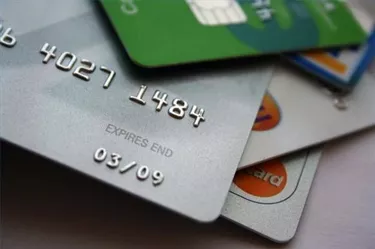
Banks Issue Credit Cards to Responsible Consumers
Banks issue credit cards to millions of consumers every year. Many Americans hold multiple credit cards, usually a combination of bank cards and merchandise charge cards. Few American consumers can walk through a mall or open their mailboxes without seeing solicitations for credit cards. Centralized credit bureau databases make it easy for lenders to review the credit histories of prospective cardholders. Banks can even purchase the contact information of consumers who fit generalized credit profiles. Those prospects receive "pre-approved" offers designed to lure business and balances away from competitors.
Before banks issue credit cards, they analyze the risk of extending credit to a prospective cardholder. Credit scores, employment history, and education level tend to play major roles in a bank's customer profile. Applicants who don't fit the standard profile for credit card holders can often qualify for "sub-prime" credit cards with higher interest rates and service fees. Once a bank approves a customer's account, it can start the process of fulfilling a new credit card.
Video of the Day
Video of the Day
How Banks Manufacture and Issue Credit Cards
Banks issue credit cards using materials and technology designed to prevent theft and deter counterfeiting. Specialized manufacturing companies silkscreen bank logos onto high-quality, durable plastic cards. Magnetic stripes and holograms can then be stamped onto the plastic before customer details are printed onto the cards. Embossing and lamination provide extra quality and security features for customers and merchants. Although some banks issue credit cards without raised text, most consumers prefer the security features of traditional embossing. Some credit cards now include RFID tags that allow customers to "wave" cards at payment devices.
Once a card has been printed and embossed, a bank's service bureau mails the inactive card to a customer's confirmed mailing address. Upon arrival, the customer can dial a special phone number or log in to a secure website to activate their card. By asking personal questions from a customer's profile, banks can thwart mail thieves from gaining access to customer accounts. In response to elevated identity theft threats, many banks allow customers to set their own security questions and emergency passwords, in case basic personal information becomes compromised.
Maintaining Accounts and Re-Issuing Credit Cards
Banks issue credit cards through major issuing agencies such as Visa, Mastercard, American Express and Discover. Occasionally, a bank may adjust its partnerships and reissue cards bearing new account numbers and the logo of a new certifying partner. Likewise, banks may issue new cards to customers who qualify for enhanced account privileges. In both situations, accounting systems issue new credit cards to customers, along with instructions for transitioning to a new card.
Once banks issue credit cards, they expect consumers to manage their accounts appropriately and to make payments on time. Going over the credit limit or missing a payment can trigger penalties, including raised interest rates and one-time service fees. Repeatedly abusing credit cards can cause a consumer to hurt their credit score or to lose the privileges of account membership.